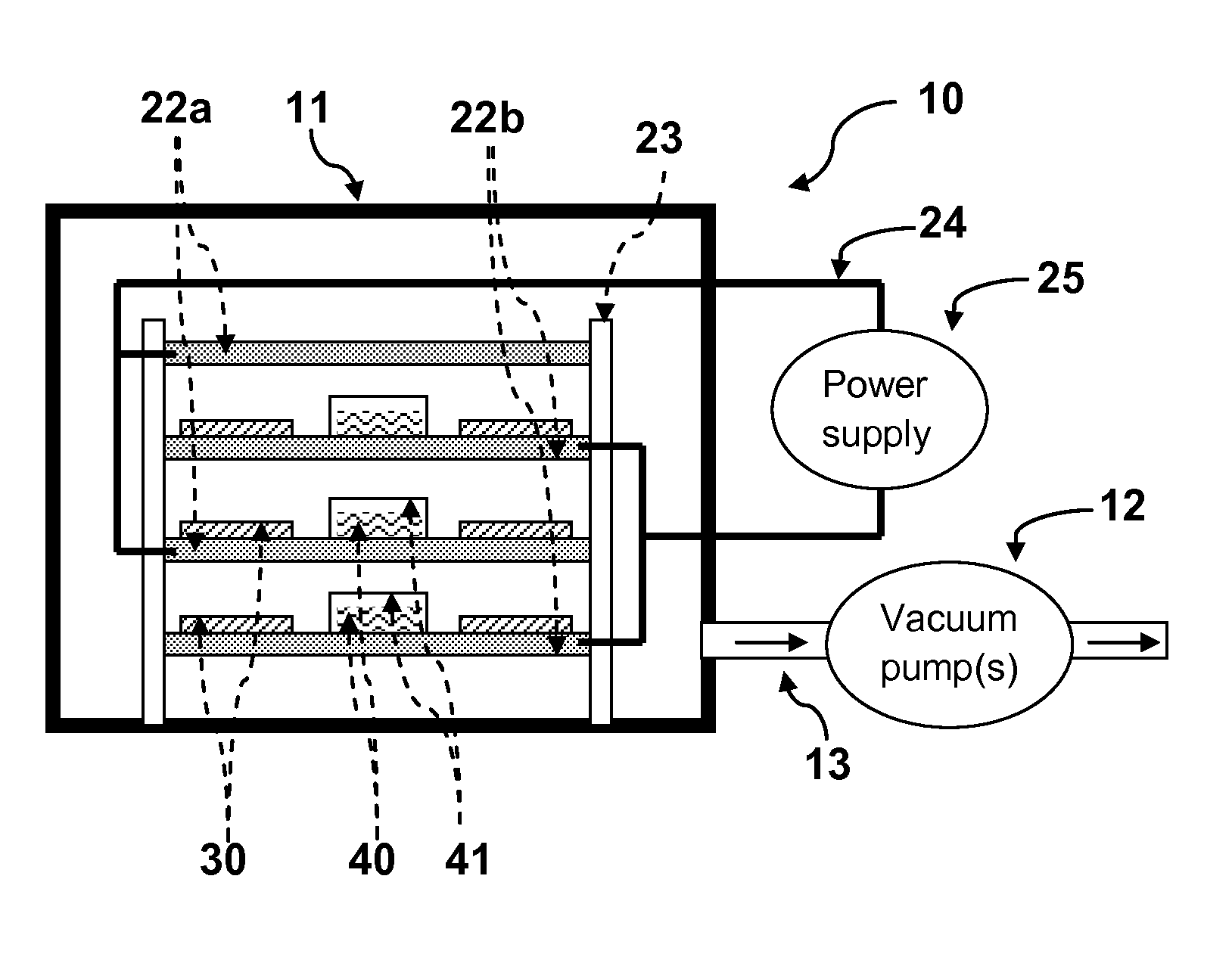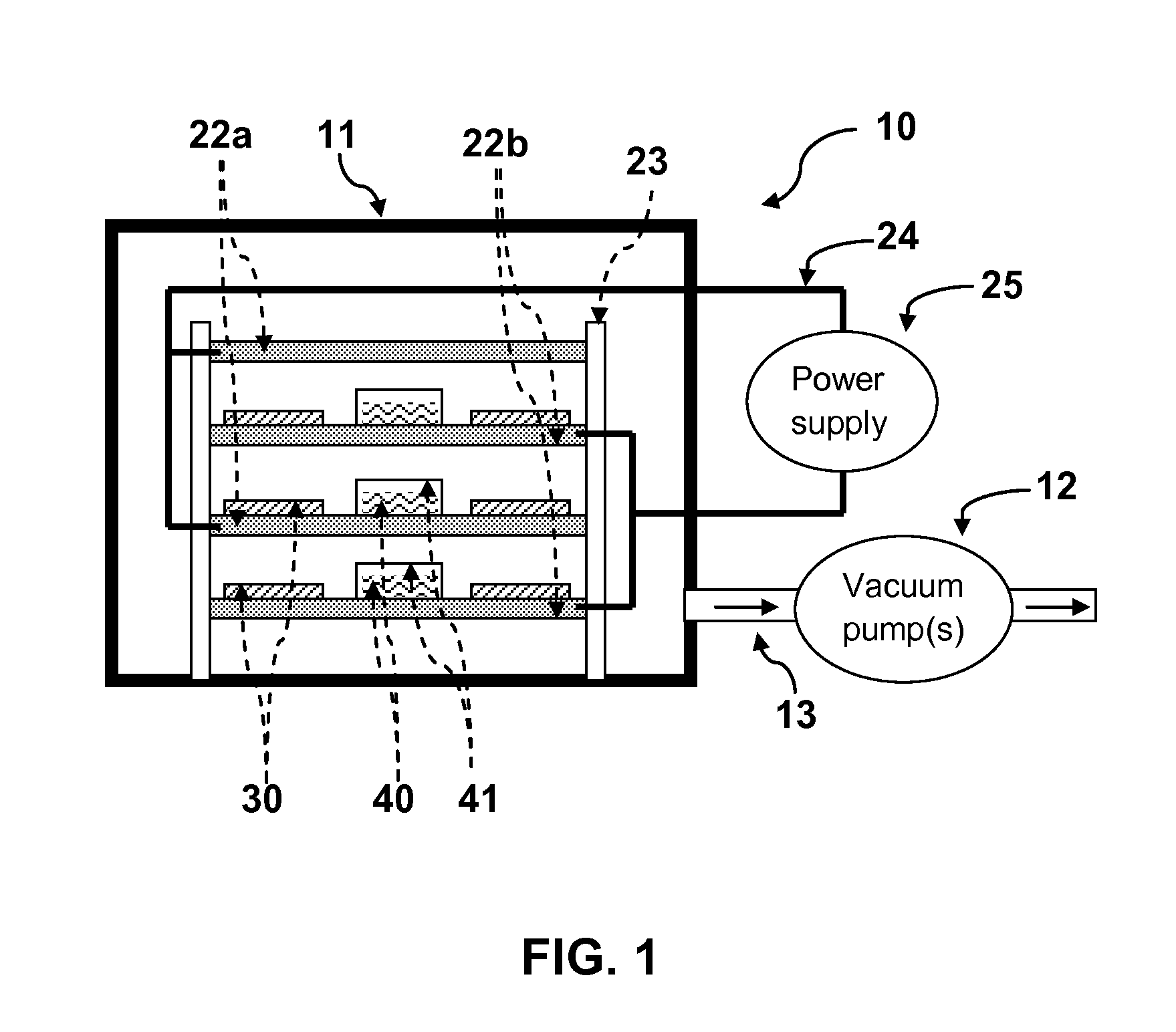Methods for Covalently Attaching Molecules on Surfaces and Producing Non-fouling Surfaces
a technology of covalent attachment and surface, which is applied in the direction of packaging foodstuffs, packaging foodstuffs, packaging goods, etc., can solve the problems of inability to work well, limited use of monomers in plasma polymerization, and needing extra equipment, so as to improve the plasma modification effect, increase the evaporation rate of chemical compounds, and improve the effect of evaporation rate and vapor pressur
- Summary
- Abstract
- Description
- Claims
- Application Information
AI Technical Summary
Benefits of technology
Problems solved by technology
Method used
Image
Examples
example a
[0029]A plasma chamber is set up according to FIG. 1, wherein the chemical 40 is Tri(ethylene glycol) monoethyl ether (CH3CH2(OCH2CH2)3OH), the container 41 is a Petri dish, and the substrate 30 is a quartz crystal micro-balance (QCM). The QCM is connected to an electronic device outside of the chamber through a coaxial cable. The electronic device records the thickness increasing rate of the thin film deposited on the QCM and the recorded data are fed into a computer. A plot of the thin film thickness increasing rate versus time is shown in FIG. 3. The unit of rate is angstrom / second, or 0.1 nm / s. At time T1, the chamber is started to be pumped down using a roughing pump to create a vacuum in the chamber; the deposition rate first turned negative as some residual molecules absorbed on the QCM surface evaporated. At time T2, the chamber is started to be pumped down using a turbo-molecular pump to create a higher vacuum. At time T3, a plasma is generated in the chamber using an RF po...
example b
[0030]A plasma chamber is set up according to FIG. 1, wherein the chemical 40 is Tri(ethylene glycol) monoethyl ether (CH3CH2(OCH2CH2)3OH), the container 41 is a Petri dish, and the substrate 30 are 96-well plates made of polystyrene material. The chamber is pumped down first by a roughing pump and then by a turbo-molecular pump to create a vacuum. Then a plasma is generated in the chamber using an RF power supply with power level adjusted to 20 W. The plasma contains ions generated from the vapor of Tri(ethylene glycol) monoethyl ether. These ions react with the surfaces of the 96-well plate to form a thin film consisting of ethylene glycol oligomers on the surface. The plasma is maintained for 30 minutes to allow for the formation of a pin-hole free thin film on the polystyrene surface. The treated 96-well plate was then compared to an untreated 96-well plate for their ability to resist the binding of macromolecules. The surfaces in the wells of both of the plates were brought int...
PUM
| Property | Measurement | Unit |
|---|---|---|
| Temperature | aaaaa | aaaaa |
| Pressure | aaaaa | aaaaa |
| Vapor pressure | aaaaa | aaaaa |
Abstract
Description
Claims
Application Information
 Login to View More
Login to View More - R&D
- Intellectual Property
- Life Sciences
- Materials
- Tech Scout
- Unparalleled Data Quality
- Higher Quality Content
- 60% Fewer Hallucinations
Browse by: Latest US Patents, China's latest patents, Technical Efficacy Thesaurus, Application Domain, Technology Topic, Popular Technical Reports.
© 2025 PatSnap. All rights reserved.Legal|Privacy policy|Modern Slavery Act Transparency Statement|Sitemap|About US| Contact US: help@patsnap.com



